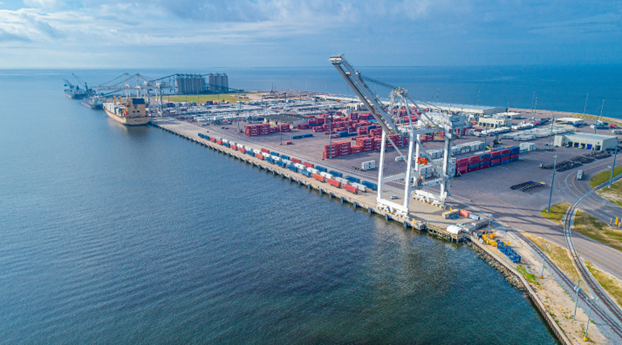
In March 2021, the Mississippi State Port Authority (MSPA) at Gulfport submitted a request to the U.S. Army Corps of Engineers to consider increasing the depth and width of the Port of Gulfport Federal navigation channel. Specifically, the request asked the Corps of Engineers to cooperatively investigate the challenges with navigation and safety as well as improving efficiency with the growing trend of larger vessel usage in the port of Gulfport, Gulfport Mississippi, Harrison County.
In September 2021, the U.S. Army Corps of Engineers completed an Initial Appraisal Report as the first step in requesting a new start feasibility study under Section 216 of the Flood Control Act of 1970, as amended. The Initial Appraisal Report determined there is Federal interest in further investigation of navigation improvements to the Port of Gulfport Federal navigation project and proposed a feasibility study to evaluate Federal interest over a fifty-year period of evaluation.
The Port of Gulfport Federal navigation channel was constructed to the authorized limits and is maintained to the following limits:
- a channel 38 feet deep, 400 feet wide, and about 10 miles long across Ship Island Bar
- a channel 36 feet deep, 300 feet wide, and about 12 miles long through Mississippi Sound, and
- a stepped anchorage basin at Gulfport 32-36 feet deep, 1,120 feet wide, and 2,640 feet long.
In April 2023, the U.S. Army Corps of Engineers and the MSPA entered into a Feasibility Cost Share Agreement to review the operation of the Gulfport Harbor Project and to report to Congress with recommendations on the advisability of modifying the project or their operation. The study will examine alternative solutions and recommend a plan that meets U.S. Army Corps of Engineers criteria to be the Tentatively Selected Plan. If the alternative is supported by U.S. Army Corps of Engineers decisions makers, the Chief of Engineers will submit a report to Congress recommending it for authorization. The plan would need to receive Congressional authorization and appropriations for design and construction. Design and construction costs would be cost shared between the U.S. Army Corps of Engineers and MSPA according to Corps policy.
In December 2024, the U.S. Army Corps of Engineers released a draft report with study findings for public review and a tentatively selected plan. The tentatively selected plan consists of deepening the turning and anchorage basin and sound channel to 46 feet, and deepening the bar channel to 48 feet. The tentatively selected plan also includes extending the channel entrance by approximately 10 miles and widening the channel by 100 feet, achieving a width of 400 feet and 500 feet at the Mississippi Sound and Bar channels, respectively.
Interested persons may review the DRAFT Gulfport Harbor, Mississippi Integrated Feasibility Report, Environmental Assessment, and Appendices the links provided in the document library found under Related Links. Comments should be provided by email to cesam-gulfportharbormsfeasibilitystudy@usace.army.mil or by mail addressed to USACE Mobile District Commander, ATTN: Gulfport Harbor Feasibility Study ), P.O. Box 2288, Mobile, AL 36628-0001